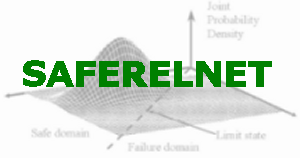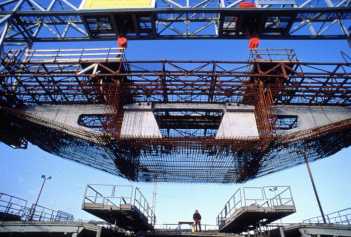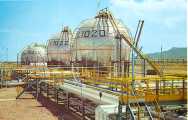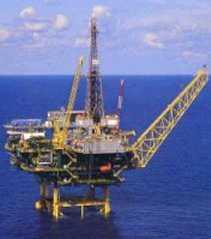 |
 |
 |
 |
| Thematic Network on Safety and Reliability of Industrial Products, Systems and Structures | |||
| terça-feira, 30 de dezembro de 2025 | |||
       |
| WP 6 - Assessment of Existing Structures and Life Extension | ||||||
|
WP Leader: BUW Objectives Review and describe the theoretical framework for and methods to plan and carry out the cost optimal assessment of existing and structures in consistency with the available information and such that any requirement to the safety of the facility or structure is achieved. An important part of this work package consists of the assessment and description of how uncertain information may be appropriately modeled and how information originating from inspections, measurements, tests and the operational history of the facility or structure may be utilized in order to update this uncertain information. Aspects of acceptability will be considered for existing process facilities and structures in co-ordination with the corresponding activities in WP 2 and WP 5. Ultimately, the work package will contribute (with WP7) to a Framework Document for Assessment and Life Extension of structures and industrial plants considering safety and economics. Task 6.1 – Assessment Methodology Task leader: BUW The specification of suitable methods related to structural problems in the individual sectors as well as the specification of suitable methods related to non-structural problems in the individual sectors are still in their early stages of development. Consequently, this task (together with WP7) aims at establishing a theoretical framework for assessment of existing structures and industrial plants. This will also include a description of the different assessment situations encountered for in the different industrial application areas and in this context it will be attempted to establish "generic assessment problem formulations" which have general applicability for solving assessment problems across the different industrial application areas. According to the core competence of the partners, the work of Task 6.1 will focus mainly on structural assessment. In addition, nevertheless, industrial plants are covered as far as contributions from the network become available. The work in Task 6.1 contains in detail a classification of structural components and building materials, a description of demands on structures, experimental assessment methods and inspection techniques, as well as reliability analysis procedures useful for structural assessment. Moreover, cost factors for a cost-benefit analysis of assessment methods will be investigated, thereby providing the connection to Task 6.2. Task 6.2 - Acceptable Safety Levels for Reassessment Task leader: BOMEL In co-ordination with the corresponding tasks of WP 2 and WP 5 the aspects of risk acceptance criteria for the assessment of existing industrial facilities and structures will be considered. The aim is to provide a framework for the determination of acceptable levels of safety within the specifics of existing structures and industrial plants. The issues surrounding acceptable safety levels in these circumstances are: relative risk for personnel on old or new structures; probability of different failure(s); consequence of failure or exposure level (business, life safety, environmental); societal benefit from continued use; (short) remaining life of facility - total vs. annual probability of failure; nature of hazard - high probability / low consequence or vice versa; relative risk precedents from different industries (seismic and building, extreme weather offshore). This includes the problem of assessment of facilities and structures, which were designed, and constructed using codes, which have become obsolete and thus no longer comply with present days requirements. Specifically, the following items will be dealt with: • Categorisation of different assessment situations (structure type, deterioration types, load types use types, together with cost and benefit structure). • Formulation of optimisation problems. • Formulation of appropriate probabilistic models for loads and resistances. • Formulation of probabilistic models for benefits and costs. |
||||||
| (Back) | ||||||
| Home | Overview | Structure | Workplan | Members | Meetings | Login |
| ©
2002 SAFERELNET Optimized for Internet Explorer 5+ |